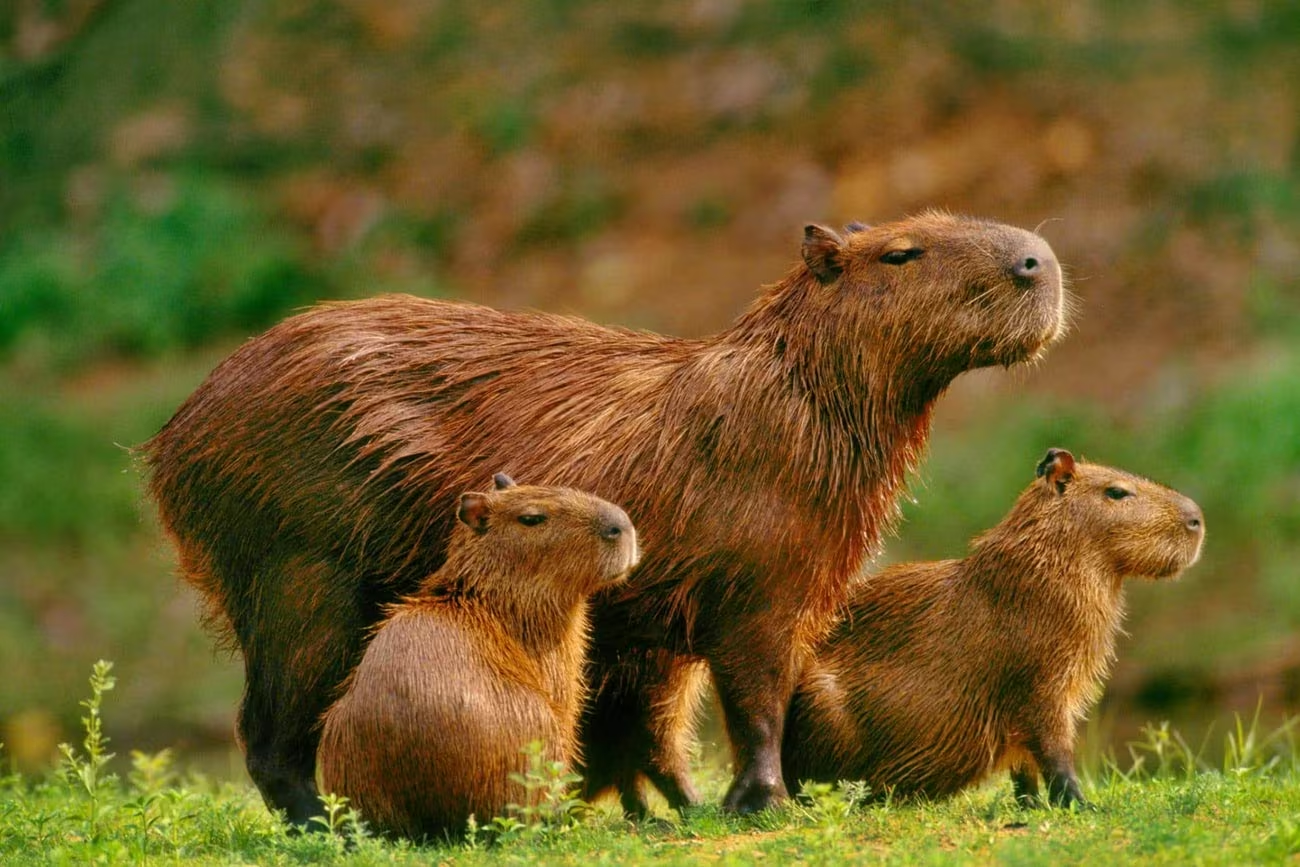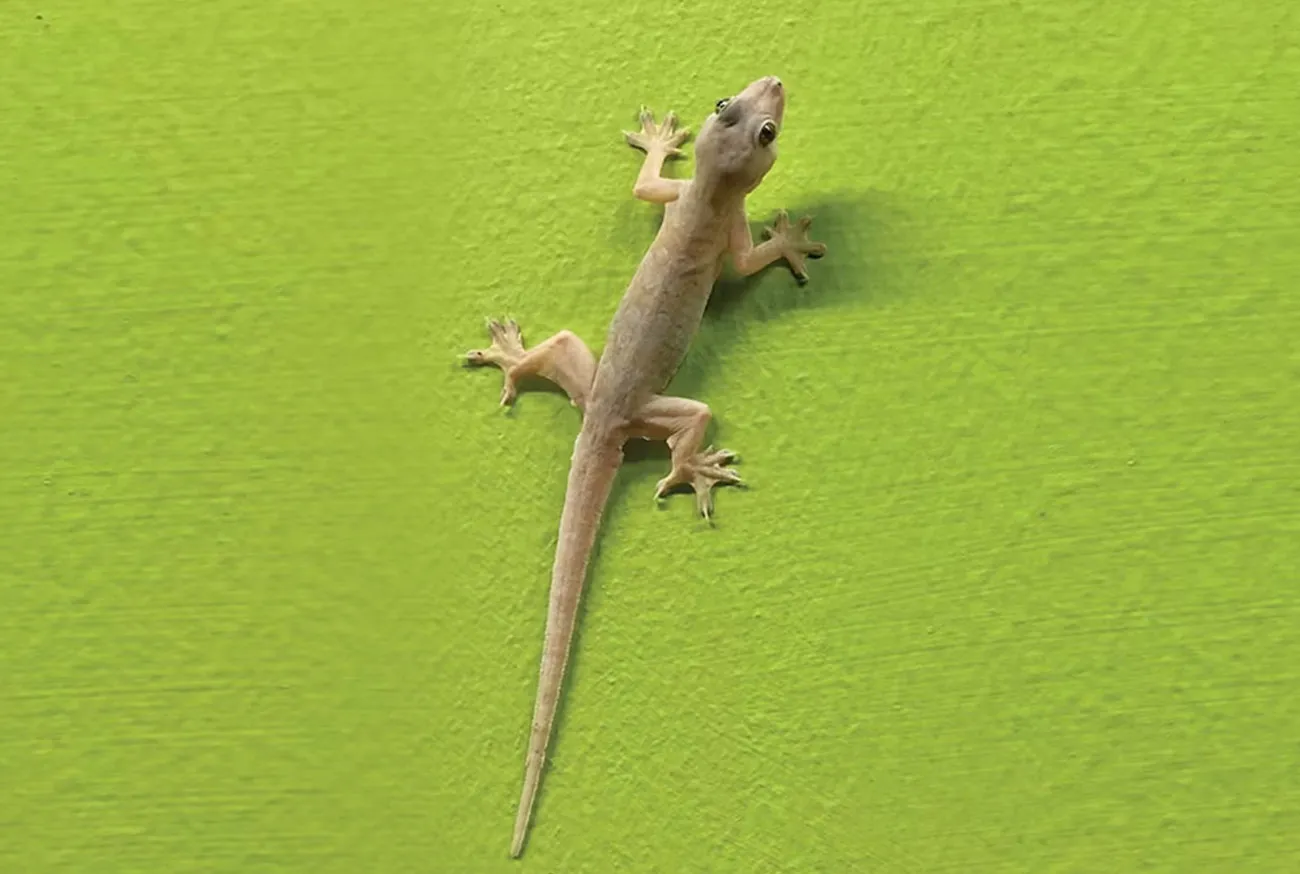What is a capybara?
The capybara (Hydrochoerus hydrochaeris) is the largest rodent on Earth, notable not just for its size but also for its unique and sociable personality. Native to tropical and subtropical environments in South America, this creature easily adapts to different ecosystems, from riverbanks and lakes to wetlands and floodplains.
Physical and biological characteristics
- Size and weight: An impressively proportioned animal, capybaras can grow over 1.3 meters long and weigh between 35 to 66 kg.
- Coat and coloration: They have thick fur, typically in brown shades, that helps with camouflage in their natural habitat.
- Social behavior: Highly sociable, capybaras live in groups of 10 to 20 individuals. This social structure helps protect against predators and reinforces their strong sense of community.
Natural habitat
Capybaras are primarily found near water. Rivers, lakes, swamps, and wetlands provide ideal living conditions, offering shelter and abundant food. While they can adapt to human-altered environments, preserving their natural habitats is crucial for maintaining biodiversity and ecological balance.
Surprising facts about this rodent
Did you know capybaras are renowned for their friendly nature and unique social behaviors? Here are some fascinating traits that make them special:
Group life
- Remarkable sociability: Unlike many rodents, capybaras are extremely social. They form herds that share responsibilities, care for young, and even keep watch against predators. Their bonds are so strong that affectionate interactions between individuals are common, making them symbols of harmony in nature.
- Communication: Using various sounds—from grunts to purrs—capybaras effectively communicate within their group. This is essential for maintaining social order and alerting to potential threats.
Environmental adaptability
- Swimming experts: The capybara is a natural swimmer. Their limbs are adapted for aquatic movement, allowing them to swiftly escape predators or forage in water. This skill earns them the title "queens of wetlands."
- Thermoregulation: Living near water isn't accidental. It helps regulate body temperature, especially on hot days, as capybaras often cool off by submerging themselves or lounging at water's edge.
Relationships with other animals
- Unexpected interactions: Capybaras are often seen with other species, such as birds that perch on their backs to hunt parasites. This symbiotic relationship highlights their ecological role as natural "cleaners."
- Misguided domestication: Despite their gentle appearance, capybaras aren't pets. Humanizing them can cause stress, health issues, and disrupt their natural behaviors.
Why are they so special?
The charm of capybaras goes beyond their physical traits. They're emblems of nature, teaching us valuable lessons about coexistence, adaptability, and environmental respect.
Connection with nature
- Symbol of harmony: Their social dynamics remind us of cooperation's importance in a competitive world, representing rare and precious balance.
- Resilience and adaptability: Thriving in human-impacted habitats, capybaras inspire nature lovers and anyone facing life's challenges.
Cultural and social impact
- Presence in popular culture: Across South America, capybaras feature in folklore, legends, and festivals, reflecting their historical and symbolic significance.
- Conservation inspiration: Their image promotes environmental campaigns, advocating for healthy ecosystems and biodiversity through reforestation and nature reserves.
Conservation challenges and how to help
Though not endangered, capybaras face real threats. Urban expansion, deforestation, and water pollution directly impact their habitats.
Major threats
- Habitat destruction: Urbanization and agriculture shrink their living spaces, causing significant ecological disruptions.
- Water pollution: As aquatic-dependent animals, contaminated rivers and lakes jeopardize their health.
- Human-wildlife conflict: In agricultural areas, they're sometimes viewed as pests, leading to captures or culls that upset ecological balance.
How to contribute
- Habitat preservation: Support projects restoring natural areas through volunteering or donations.
- Environmental education: Raise awareness about capybaras' ecological role to build a sustainable society.
- Conscious consumption: Adopt eco-friendly practices to reduce environmental impact.

Tips for exotic animal lovers
While exotic pets may seem appealing, not all wildlife suits domestic life. The capybara, for instance, requires wild spaces to thrive.
Why capybaras aren't pets
- Specific needs: They require large, water-rich areas impossible to replicate at home.
- Wildlife impact: Removing them disrupts ecosystems and causes health issues.
- Legal/ethical concerns: Many countries prohibit keeping wildlife as pets to prevent exploitation.
Ethical alternatives
For those who respect nature, consider:
- Adopting domesticated exotics: Choose species bred for human cohabitation.
- Supporting sanctuaries: Fund ethical wildlife encounters that preserve habitats.
- Ecotourism: Observe animals in the wild to appreciate biodiversity responsibly.
Capybaras' environmental role
The capybara is more than a rodent; it's a keystone species. By grazing aquatic/terrestrial plants, they renew soil and control invasive species, maintaining ecological balance for entire ecosystems.
Key ecological interactions
- Seed dispersal: Their diet helps regenerate degraded areas.
- Parasite control: Attract birds that clean pests from their coats.
- Environmental indicators: Healthy populations signal thriving ecosystems.
Remember...
The capybara exemplifies wildlife's richness. Their sociability, adaptability, and ecological roles urge us to protect nature and respect wild-domestic boundaries. Though tempting as pets, they belong in the wild where they sustain ecosystems.
Share this article, comment your favorite capybara fact, and explore Adore Pets' content to celebrate Earth's biodiversity. By engaging with these stories, you join the movement preserving life in all its forms.

















Add comment